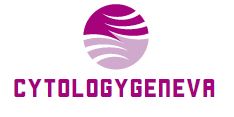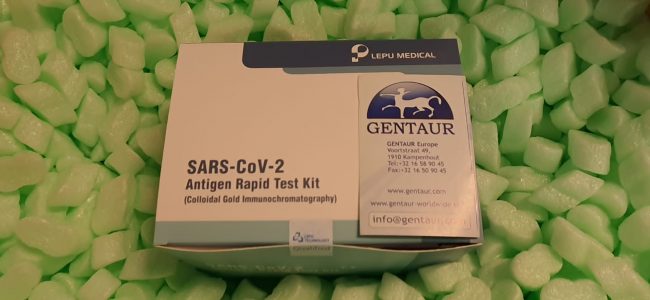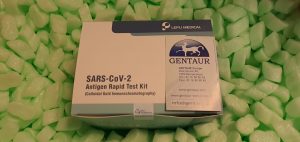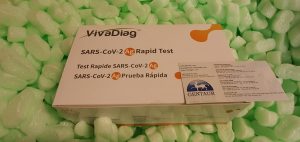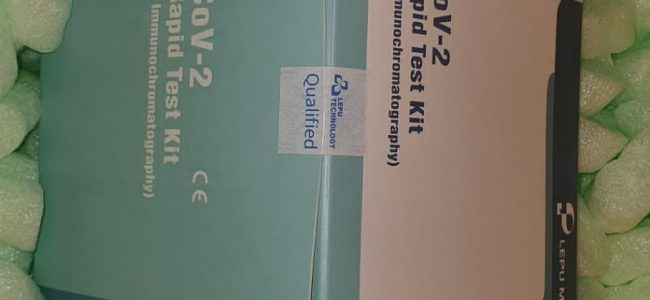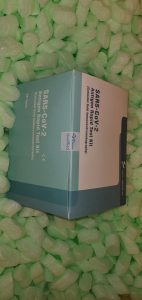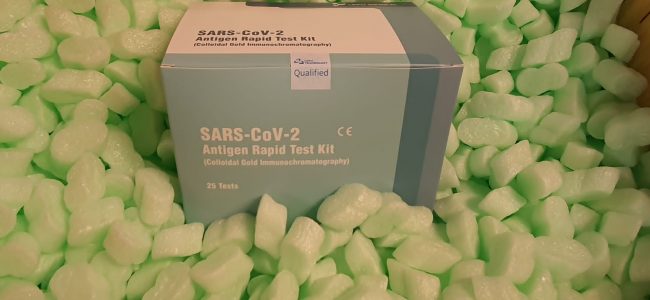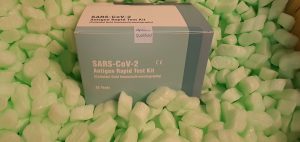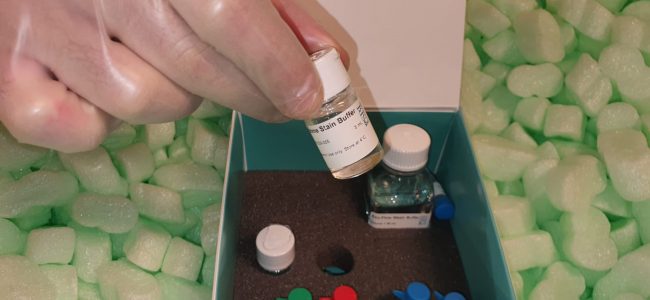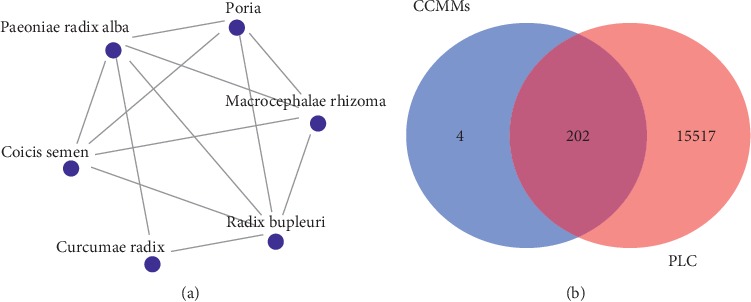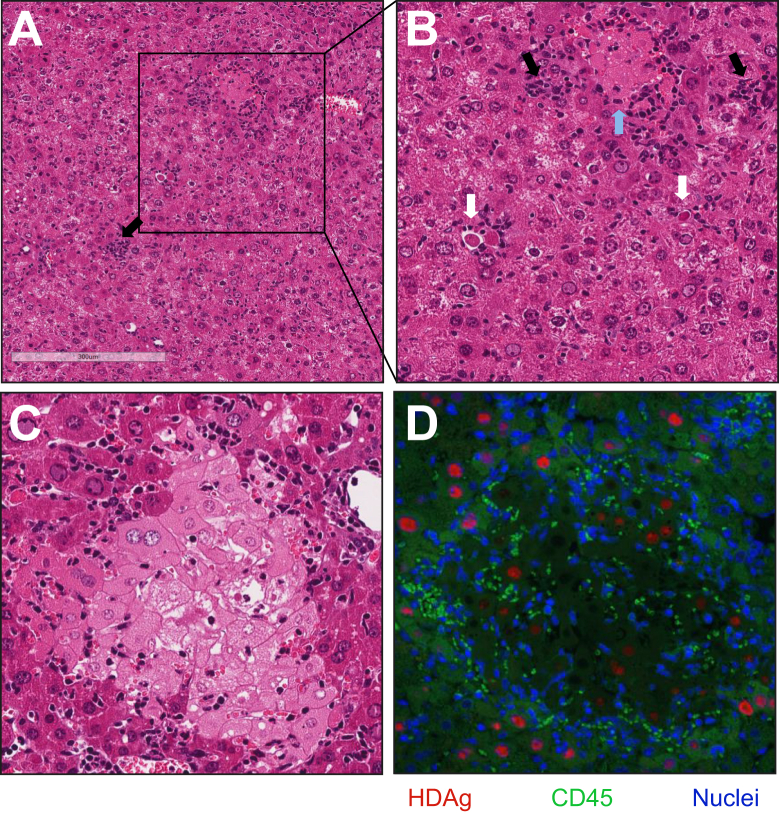
This examine examined the affiliation between peritoneal cytology and survival in early-stage cervical most cancers. This is a nationwide multicenter retrospective examine, analyzing consecutive girls with scientific stage IB1-IIB cervical most cancers who underwent radical hysterectomy with obtainable peritoneal cytology outcomes from 2004-2008.
Propensity rating inverse likelihood of therapy weighting was used to evaluate the influence of malignant peritoneal cytology on survival. Among 1409 analyzed circumstances, 88 (6.2%) had malignant peritoneal cytology. On weighted fashions, malignant peritoneal cytology was related with decreased disease-free survival (hazard ratio (HR) 1.78, 95% confidence interval (CI) 1.36-2.32) and total survival (OS, HR 1.93, 95% CI 1.44-2.59).
On sensitivity analyses, malignant peritoneal cytology was related with decreased OS in adenocarcinoma/adenosquamous carcinoma, high-risk early-stage illness and those that acquired concurrent chemo-radiotherapy. However, amongst girls who acquired postoperative systemic chemotherapy, malignant peritoneal cytology was not related with OS (HR 1.21, 95% CI 0.72-2.04).
A systematic evaluation, together with our outcomes, confirmed that malignant peritoneal cytology was related with decreased OS (HR 4.03, 95% CI 1.81-8.99) and elevated recurrence in squamous carcinoma (odds ratio 1.89, 95% CI 1.05-3.39) and adenocarcinoma (odds ratio 4.30, 95% CI 2.30-8.02). In conclusion, the presence of malignant cells in peritoneal cytology is related with decreased survival in early-stage cervical most cancers. The doable profit of systemic chemotherapy on this subgroup deserves additional investigation.
Although the charges are usually low (0.2%-10%), unsatisfactory Papanicolaou (Pap) checks are related with an elevated danger of epithelial lesions on subsequent follow-up. Therefore, some research have advisable further laboratory processing, resampling of sufferers, and extra not too long ago, human papillomavirus testing.Consecutive circumstances signed out as unsatisfactory for analysis (UE) have been recognized from January 1, 2008 to December 31, 2010 in the cytology laboratory at Houston Methodist Hospital.
Patient’s demographics, related prior scientific historical past, kind of Pap check, causes for UE prognosis, and cytology or histology follow-up have been obtained from the pathology database.Among 56,563 complete Pap checks, 276 have been signed out as UE (0.47%). Nearly half of these sufferers have been older than 50 years (15 to 88 years). The majority (85%) of sufferers over 50 years outdated had a historical past of prior gynecologic most cancers. Low squamous cellularity was the commonest trigger of UE in all age teams.
Follow-up abnormalities have been recognized in 21 of 73 sufferers (29%).Low squamous cellularity was the commonest trigger of UE and was typically seen in girls older than 50 years of age.The common rating for the first check set was considerably greater for residents who acquired formal coaching by a cytotechnologist than for many who didn’t. Overall, 16 of 90 slides have been misclassified by 40% or extra of residents, half of which exhibited glandular abnormalities.The goal evaluation offered by mock PT is a great tool for each college and residents.
Mock gynecologic cytology proficiency testing as a milestone evaluation device for anatomic pathology residents.
One of the main goals of the Next Accreditation System is to maneuver towards an outcomes-based analysis system the place every accredited medical residency program should exhibit that its residents are competent in performing the important duties needed for scientific follow. The vital danger related with UE emphasizes the significance of acceptable follow-up on these sufferers.
Because all pathologists who sign-out or display screen Papanicolaou (Pap) checks are required to move an annual 10-slide gynecologic cytology proficiency check (PT), we developed mock PT modules as a device for assessing competency.In 2007, we launched mock proficiency testing with Three distinct modules, every consisting of 3 10-slide check units (10 ThinPrep, 10 SurePath, and 10 standard Pap slides).
Each module was administered at Three completely different time factors. We evaluated the following parameters: (1) efficiency variations between Pap preparations; (2) efficiency over time; (3) efficiency earlier than and after initiation of one-on-one instructing periods with cytotechnologists in 2009; and (4) high quality of check slides.Residents confirmed enchancment over time, and total scores didn’t differ considerably amongst ThinPrep, SurePath, and traditional slide units.

Pancreatobiliary duct brushing cytopathology: an evaluation of the CAP Non-Gynecologic Cytology (NGC) program for pancreatic pathology 2000-2011.
<AbstractText>The College of American Pathologists (CAP, Northfield, Illinois) displays efficiency in cytologic evaluation to guage the commonplace of follow and take into account methods for methodology enchancment.</AbstractText><AbstractText>5700 responses to 97 pancreatobiliary tract brushing slide challenges have been collected by the CAP Non-Gynecologic Cytopathology (NGC) Program, between 2000 and 2011.
Analysis examined participant settlement with the common diagnostic classes of benign or malignant. Suspicious responses have been categorised as concordant with slides having a optimistic common prognosis. Conventional smears with Pap stain and Romanowsky stain have been evaluated along with CytoSpin, ThinPrep, and SurePath preparations. ThinPrep, or SurePath.</AbstractText><AbstractText>Participants carried out properly with better than 90% settlement with the goal diagnostic class.
A nonlinear combined mannequin was match with Three factors-general prognosis, participant kind, and preparation kind.</AbstractText><AbstractText>Overall concordance price was 91.7%. Preparation kind and common prognosis have been considerably related with the concordance price. The interplay time period between these two elements was additionally statistically vital, with ThinPrep performing marginally higher for optimistic circumstances and CytoSpin performing higher for detrimental circumstances. Conventional smears didn’t carry out in addition to CytoSpin,
Wright Stain |
|||
| 21770034-1 | Glycomatrix | 25 g | EUR 46.61 |
Wright Stain |
|||
| 21770034-2 | Glycomatrix | 100 g | EUR 165.71 |
Wright Stain |
|||
| 13111 | Sisco Laboratories | 25 Gms | EUR 4.5 |
|
Description: Part B |
|||
Wright stain, certified |
|||
| 02785-100 | Polysciences Europe GmbH | 100g | EUR 274 |
|
Description: 68988-92-1 |
|||
Wright stain, certified |
|||
| 02785-25 | Polysciences Europe GmbH | 25g | EUR 95 |
|
Description: 68988-92-1 |
|||
Wright-Giemsa Solution |
|||
| WGS3800 | ScyTek Laboratories | 1 Gal. | EUR 102.85 |
Wright-Giemsa Solution |
|||
| WGS500 | ScyTek Laboratories | 500 ml | EUR 28.28 |
Wright-Giemsa Solution |
|||
| WGS999 | ScyTek Laboratories | 1000 ml | EUR 45 |
Wright Staining Solution |
|||
| K1182-100 | ApexBio | 100ml | EUR 40 |
|
Description: Cell Biology|Staining Solution |
|||
Wright Staining Solution |
|||
| K1182-500 | ApexBio | 500ml | EUR 64 |
|
Description: Cell Biology|Staining Solution |
|||
Wright-Giemsa Solution |
|||
| M1438-1000 | Biovision | each | EUR 379.2 |
Wright-Giemsa Solution |
|||
| M1438-500 | Biovision | each | EUR 248.4 |
DNA-Sorb-D DNA extraction kit from liquid-based cytology samples (Cytoscreen, |
|||
| K-1-8-100 | Sacace Biotechnologies | 100 | EUR 245.25 |
Wright-Giemsa Stain Kit |
|||
| WGK-1 | ScyTek Laboratories | 1 kit(s) | EUR 52.72 |
Wright-Giemsa Stain Kit |
|||
| WGK-2 | ScyTek Laboratories | 1 kit(s) | EUR 27 |
Wright-Giemsa Stain Kit |
|||
| K1438-30 | Biovision | each | EUR 314.4 |
Wright-Giemsa Stain Kit |
|||
| K1438-500 | Biovision | each | EUR 444 |
StainRITE® Wright Stain Solution |
|||
| 24986-1 | Polysciences Europe GmbH | 1L | EUR 89 |
StainRITE® Wright Stain Solution |
|||
| 24986-20 | Polysciences Europe GmbH | 20L | EUR 356 |
StainRITE® Wright Stain Solution |
|||
| 24986-4 | Polysciences Europe GmbH | 4L | EUR 190 |
Synthetic Broth, AOAC (Wright and Mundy |
|||
| M334-500G | EWC Diagnostics | 1 unit | EUR 45.2 |
|
Description: Synthetic Broth, AOAC (Wright and Mundy |
|||
StainRITE® Wright-Giemsa Stain Solution |
|||
| 24985-1 | Polysciences Europe GmbH | 1L | EUR 128 |
StainRITE® Wright-Giemsa Stain Solution |
|||
| 24985-10 | Polysciences Europe GmbH | 10L | EUR 506 |
StainRITE® Wright Stain Phosphate Buffer pH 6.8 |
|||
| 24989-1 | Polysciences Europe GmbH | 1L | EUR 60 |
StainRITE® Wright-Giemsa Stain Phosphate Buffer pH 6.8 |
|||
| 24984-1 | Polysciences Europe GmbH | 1L | EUR 56 |
StainRITE® Wright-Giemsa Stain Phosphate Buffer pH 6.8 |
|||
| 24984-4 | Polysciences Europe GmbH | 4L | EUR 144 |
Fixative, for fixing cytological or hist |
|||
| S102-500ML | EWC Diagnostics | 1 unit | EUR 31.73 |
|
Description: Fixative, for fixing cytological or hist |
|||
Wright's stain |
|||
| GT7819 | Glentham Life Sciences | 10g | EUR 144.84 |
Wright's stain |
|||
| GT7819-10 | Glentham Life Sciences | 10 | EUR 15.9 |
Wright's stain |
|||
| GT7819-100 | Glentham Life Sciences | 100 | EUR 79.1 |
Wright's stain |
|||
| GT7819-100G | Glentham Life Sciences | 100 g | EUR 132 |
Wright's stain |
|||
| GT7819-10G | Glentham Life Sciences | 10 g | EUR 55.2 |
Wright's stain |
|||
| GT7819-25 | Glentham Life Sciences | 25 | EUR 27.8 |
Wright's stain |
|||
| GT7819-250 | Glentham Life Sciences | 250 | EUR 158.2 |
Wright's stain |
|||
| GT7819-250G | Glentham Life Sciences | 250 g | EUR 228 |
Wright's stain |
|||
| GT7819-25G | Glentham Life Sciences | 25 g | EUR 69.6 |
Wrights Stain |
|||
| S030-500ML | EWC Diagnostics | 1 unit | EUR 8.52 |
|
Description: Wrights Stain |
|||
Wright’s stain, Hi-CERT™ |
|||
| GRM265-25G | EWC Diagnostics | 1 unit | EUR 25.94 |
|
Description: Wright’s stain, Hi-CERT™ |
|||
Wright’s stain, Hi-CERT™ |
|||
| GRM265-5G | EWC Diagnostics | 1 unit | EUR 6.93 |
|
Description: Wright’s stain, Hi-CERT™ |
|||
Wrightiadione |
|||
| TBZ1039 | ChemNorm | unit | Ask for price |
Wrights - Giemsa Stain |
|||
| RRSP978-D | Atom Scientific | 500ml | EUR 10.19 |
Wrights - Giemsa Stain |
|||
| RRSP978-E | Atom Scientific | 1L | EUR 14.76 |
Wrights - Giemsa Stain |
|||
| RRSP978-F | Atom Scientific | 2.5L | EUR 22.73 |
Wright’s Stain, Certified |
|||
| S030-250ML | EWC Diagnostics | 1 unit | EUR 4.88 |
|
Description: Wright’s Stain, Certified |
|||
Wrights Stain (Modified) |
|||
| RRSP153-D | Atom Scientific | 500ml | EUR 9.25 |
Wrights Stain (Modified) |
|||
| RRSP153-E | Atom Scientific | 1L | EUR 12.49 |
Wrights Stain (Modified) |
|||
| RRSP153-F | Atom Scientific | 2.5L | EUR 19.31 |
Wright's stain (Eosin methyl blue) |
|||
| WB0989 | Bio Basic | 25g | EUR 91.32 |
Wright's Stain Buffer Solution |
|||
| 37216-34 | NACALAI TESQUE | 100ML | EUR 14 |
Wrights Blood Stain certified |
|||
| W00180 | Pfaltz & Bauer | 25G | EUR 154.23 |
boite de 200 filtres pour cytologie, 24 x 76 mm + 1 trou 7 mm |
|||
| CY430F2476/1T | Filtratech | 200 | EUR 13.1 |
boite de 200 filtres pour cytologie, 26 x 63 mm + 1 trou |
|||
| CY430F2663/1T | Filtratech | 200 | EUR 13.1 |
boite de 200 filtres pour cytologie, 25 x 75 mm + 2 trous |
|||
| CY430F2575/2T | Filtratech | 200 | EUR 13.1 |
Cytological Sampling Brush - PK100 |
|||
| CYT1050 | Scientific Laboratory Supplies | PK100 | EUR 63.45 |
Recombinant Dalea wrightii Maturase K (matK), partial |
|||
| MBS1343675-INQUIRE | MyBiosource | INQUIRE | Ask for price |
Recombinant Ipomoea wrightii ATP synthase subunit beta, chloroplastic (atpB) |
|||
| MBS1363455-002mgBaculovirus | MyBiosource | 0.02mg(Baculovirus) | EUR 1355 |
Recombinant Ipomoea wrightii ATP synthase subunit beta, chloroplastic (atpB) |
|||
| MBS1363455-002mgEColi | MyBiosource | 0.02mg(E-Coli) | EUR 1055 |
Recombinant Ipomoea wrightii ATP synthase subunit beta, chloroplastic (atpB) |
|||
| MBS1363455-002mgYeast | MyBiosource | 0.02mg(Yeast) | EUR 1115 |
Recombinant Ipomoea wrightii ATP synthase subunit beta, chloroplastic (atpB) |
|||
| MBS1363455-01mgEColi | MyBiosource | 0.1mg(E-Coli) | EUR 1230 |
Recombinant Ipomoea wrightii ATP synthase subunit beta, chloroplastic (atpB) |
|||
| MBS1363455-01mgYeast | MyBiosource | 0.1mg(Yeast) | EUR 1310 |
Recombinant Cuphea wrightii 3-oxoacyl-[acyl-carrier-protein] synthase 3 B, chloroplastic (KAS3B) |
|||
| MBS1123244-INQUIRE | MyBiosource | INQUIRE | Ask for price |
Recombinant Cuphea wrightii 3-oxoacyl-[acyl-carrier-protein] synthase 3 A, chloroplastic (KAS3A), partial |
|||
| MBS1004055-INQUIRE | MyBiosource | INQUIRE | Ask for price |
Clip for Cyto Chamber - PK4 |
|||
| GBA1524 | Scientific Laboratory Supplies | PK4 | EUR 876.87 |
Mouse antibody for Cytomegalovirus |
|||
| 887 | Virostat | 100 ug | EUR 431.93 |
|
Description: This is Mouse monoclonal FITC conjugated antibody against Cytomegalovirus pp65 for WB, ELISA. |
|||
ELISA Kit for Cytoglobin (CYGB) |
|||
| SEC426Hu | Cloud-Clone | 96Т | EUR 700 |
ELISA Kit for Cytoglobin (CYGB) |
|||
| SEC426Ra | Cloud-Clone | 96Т | EUR 760 |
Mouse antibody for Cytomegalovirus gB |
|||
| 826 | Virostat | 100 ug | EUR 386.26 |
|
Description: This is purified Mouse monoclonal antibody against Cytomegalovirus gB for WB, ELISA. |
|||
Mouse antibody for Cytomegalovirus gH |
|||
| 861 | Virostat | 100 ug | EUR 386.26 |
|
Description: This is purified Mouse monoclonal antibody against Cytomegalovirus gH for WB, ELISA. |
|||
ELISA Kit for Cytokeratin 9 (CK9) |
|||
| SEA549Hu | Cloud-Clone | 96Т | EUR 630 |
ELISA Kit for Cytokeratin 7 (CK7) |
|||
| SEA556Hu | Cloud-Clone | 96Т | EUR 630 |
ELISA Kit for Cytochrome C (CYCS) |
|||
| SEA594Hu | Cloud-Clone | 96Т | EUR 665 |
ELISA Kit for Cytochrome C (CYCS) |
|||
| SEA594Mi | Cloud-Clone | 96Т | EUR 648 |
ELISA Kit for Cytochrome C (CYCS) |
|||
| SEA594Mu | Cloud-Clone | 96Т | EUR 684 |
ELISA Kit for Cytochrome C (CYCS) |
|||
| SEA594Po | Cloud-Clone | 96Т | EUR 756 |
ELISA Kit for Cytochrome C (CYCS) |
|||
| SEA594Ra | Cloud-Clone | 96Т | EUR 722 |
ELISA Kit for Cytokeratin 5 (CK5) |
|||
| SEA488Hu | Cloud-Clone | 96Т | EUR 630 |
ELISA Kit for Cytokeratin 4 (CK4) |
|||
| SEA489Hu | Cloud-Clone | 96Т | EUR 630 |
ELISA Kit for Cytokeratin 1 (CK1) |
|||
| SEA492Hu | Cloud-Clone | 96Т | EUR 630 |
ELISA Kit for Cytokeratin 1 (CK1) |
|||
| SEA492Ra | Cloud-Clone | 96Т | EUR 684 |
ELISA Kit for Cytokeratin 8 (CK8) |
|||
| SEC025Hu | Cloud-Clone | 96Т | EUR 700 |
Mouse antibody for Cytomegalovirus pp65 |
|||
| 885 | Virostat | 100 ug | EUR 386.26 |
|
Description: This is purified Mouse monoclonal antibody against Cytomegalovirus pp65 for WB, ELISA. |
|||
ELISA Kit for Cytokeratin 14 (CK14) |
|||
| SEA522Hu | Cloud-Clone | 96Т | EUR 630 |
ELISA Kit for Cytokeratin 12 (CK12) |
|||
| SEA535Hu | Cloud-Clone | 96Т | EUR 630 |
ELISA Kit for Cytokeratin 16 (CK16) |
|||
| SEA516Hu | Cloud-Clone | 96Т | EUR 630 |
ELISA Kit for Cytokeratin 15 (CK15) |
|||
| SEA517Hu | Cloud-Clone | 96Т | EUR 630 |
ELISA Kit for Cytokeratin 18 (CK18) |
|||
| SEB231Hu | Cloud-Clone | 96Т | EUR 665 |
ELISA Kit for Cytokeratin 18 (CK18) |
|||
| SEB231Mu | Cloud-Clone | 96Т | EUR 684 |
ELISA Kit for Cytokeratin 18 (CK18) |
|||
| SEB231Po | Cloud-Clone | 96Т | EUR 798 |
ELISA Kit for Cytokeratin 18 (CK18) |
|||
| SEB231Ra | Cloud-Clone | 96Т | EUR 722 |
ELISA Kit for Cytokeratin 19 (CK19) |
|||
| SEB239Hu | Cloud-Clone | 96Т | EUR 665 |
ELISA Kit for Cytokeratin 19 (CK19) |
|||
| SEB239Mu | Cloud-Clone | 96Т | EUR 684 |
ELISA Kit for Cytokeratin 10 (CK10) |
|||
| SEB691Hu | Cloud-Clone | 96Т | EUR 665 |
ELISA Kit for Cytokeratin 17 (CK17) |
|||
| SEB822Hu | Cloud-Clone | 96Т | EUR 665 |
ELISA Kit for Cytokeratin 13 (CK13) |
|||
| SEB875Hu | Cloud-Clone | 96Т | EUR 665 |
CLIA Kit for Interaction Protein For Cytohesin Exchange Factors 1 (IPCEF1) |
|||
| MBS2000695-10x96StripWells | MyBiosource | 10x96-Strip-Wells | EUR 6070 |
CLIA Kit for Interaction Protein For Cytohesin Exchange Factors 1 (IPCEF1) |
|||
| MBS2000695-24StripWells | MyBiosource | 24-Strip-Wells | EUR 345 |
CLIA Kit for Interaction Protein For Cytohesin Exchange Factors 1 (IPCEF1) |
|||
| MBS2000695-48StripWells | MyBiosource | 48-Strip-Wells | EUR 630 |
CLIA Kit for Interaction Protein For Cytohesin Exchange Factors 1 (IPCEF1) |
|||
| MBS2000695-5x96StripWells | MyBiosource | 5x96-Strip-Wells | EUR 3380 |
CLIA Kit for Interaction Protein For Cytohesin Exchange Factors 1 (IPCEF1) |
|||
| MBS2000695-96StripWells | MyBiosource | 96-Strip-Wells | EUR 850 |
CLIA Kit for Interaction Protein For Cytohesin Exchange Factors 1 (IPCEF1) |
|||
| MBS2000798-10x96StripWells | MyBiosource | 10x96-Strip-Wells | EUR 6230 |
CLIA Kit for Interaction Protein For Cytohesin Exchange Factors 1 (IPCEF1) |
|||
| MBS2000798-24StripWells | MyBiosource | 24-Strip-Wells | EUR 350 |
CLIA Kit for Interaction Protein For Cytohesin Exchange Factors 1 (IPCEF1) |
|||
| MBS2000798-48StripWells | MyBiosource | 48-Strip-Wells | EUR 645 |
CLIA Kit for Interaction Protein For Cytohesin Exchange Factors 1 (IPCEF1) |
|||
| MBS2000798-5x96StripWells | MyBiosource | 5x96-Strip-Wells | EUR 3465 |
CLIA Kit for Interaction Protein For Cytohesin Exchange Factors 1 (IPCEF1) |
|||
| MBS2000798-96StripWells | MyBiosource | 96-Strip-Wells | EUR 870 |
Goat polyclonal antibody for Cytomegalovirus |
|||
| 7654 | Virostat | 1 ml | EUR 373.2 |
|
Description: This is HRP conjugated goat polyclonal antibody against Cytomegalovirus AD 169 for WB, ELISA. |
|||
Goat polyclonal antibody for Cytomegalovirus |
|||
| 803 | Virostat | 1 ml | EUR 347.1 |
|
Description: This is FITC conjugated goat polyclonal antibody against Cytomegalovirus AD 169 for WB, ELISA. |
|||
ELISA kit for Mouse Cytokine |
|||
| KTE71626-48T | Abbkine | 48T | EUR 424.8 |
|
Description: Quantitative sandwich ELISA for measuring Mouse Cytokine in samples from cell culture supernatants, serum, whole blood, plasma and other biological fluids. |
|||
ELISA kit for Mouse Cytokine |
|||
| KTE71626-5platesof96wells | Abbkine | 5 plates of 96 wells | EUR 2702.4 |
|
Description: Quantitative sandwich ELISA for measuring Mouse Cytokine in samples from cell culture supernatants, serum, whole blood, plasma and other biological fluids. |
|||
ELISA kit for Mouse Cytokine |
|||
| KTE71626-96T | Abbkine | 96T | EUR 686.4 |
|
Description: Quantitative sandwich ELISA for measuring Mouse Cytokine in samples from cell culture supernatants, serum, whole blood, plasma and other biological fluids. |
|||
ELISA kit for Human Cytokine |
|||
| KTE63051-48T | Abbkine | 48T | EUR 424.8 |
|
Description: Quantitative sandwich ELISA for measuring Human Cytokine in samples from cell culture supernatants, serum, whole blood, plasma and other biological fluids. |
|||
ELISA kit for Human Cytokine |
|||
| KTE63051-5platesof96wells | Abbkine | 5 plates of 96 wells | EUR 2702.4 |
|
Description: Quantitative sandwich ELISA for measuring Human Cytokine in samples from cell culture supernatants, serum, whole blood, plasma and other biological fluids. |
|||
ELISA kit for Human Cytokine |
|||
| KTE63051-96T | Abbkine | 96T | EUR 686.4 |
|
Description: Quantitative sandwich ELISA for measuring Human Cytokine in samples from cell culture supernatants, serum, whole blood, plasma and other biological fluids. |
|||
ELISA Kit for Cytokeratin 20 (CK 20) |
|||
| SEB240Hu | Cloud-Clone | 96Т | EUR 665 |
Mouse antibody for Cytomegalovirus late ag. |
|||
| 881 | Virostat | 100 ug | EUR 386.26 |
|
Description: This is purified Mouse monoclonal antibody against Cytomegalovirus late ag for WB, ELISA. |
|||
Cyto-Blue, Cytoplasmic counterstain for countersta |
|||
| NB354 | Innovex | 100 ml | EUR 355 |
|
Description: Cyto-Blue, Cytoplasmic counterstain for counterstaining nuclear IHC& ICC stains such as ER, PR, Ki-67 and all antibodies staining nuclear markers, 100 ml (Large volume) |
|||
Cyto-Blue, Cytoplasmic counterstain for countersta |
|||
| NB310 | Innovex | 10 ml | EUR 139 |
|
Description: Cyto-Blue, Cytoplasmic counterstain for counterstaining nuclear IHC & ICC stains such as ER, PR, Ki-67 and all antibodies staining nuclear markers, 10 ml (Small volume) |
|||
ELISA Kit for Cytochrome P450 1A2 (CYP1A2) |
|||
| SED294Hu | Cloud-Clone | 96Т | EUR 700 |
ELISA Kit for Cytochrome P450 1A2 (CYP1A2) |
|||
| SED294Ra | Cloud-Clone | 96Т | EUR 760 |
ELISA Kit for Cytochrome P450 1A1 (CYP1A1) |
|||
| SED295Hu | Cloud-Clone | 96Т | EUR 700 |
ELISA Kit for Cytochrome P450 1A1 (CYP1A1) |
|||
| SED295Ra | Cloud-Clone | 96Т | EUR 760 |
ELISA Kit for Cytochrome P450 1B1 (CYP1B1) |
|||
| SED297Hu | Cloud-Clone | 96Т | EUR 700 |
ELISA Kit for Cytochrome P450 3A4 (CYP3A4) |
|||
| SED299Hu | Cloud-Clone | 96Т | EUR 700 |
ELISA Kit for Cytochrome P450 3A4 (CYP3A4) |
|||
| SED299Mu | Cloud-Clone | 96Т | EUR 720 |
ELISA Kit for Cytochrome P450 2D6 (CYP2D6) |
|||
| SED302Hu | Cloud-Clone | 96Т | EUR 700 |
There was no vital distinction between cytotechnologists and pathologists. Small vital variations have been discovered between preparations sorts. The statistical variations between focus methods could also be attributable to dissimilarities in the amount of cells and high quality of cytomorphology, thus affecting the interpretations by taking part laboratories.</AbstractText>
